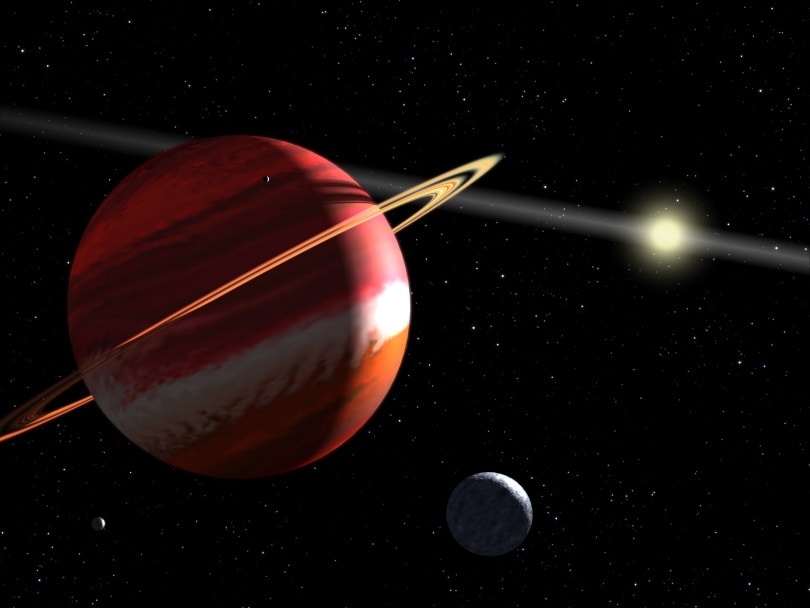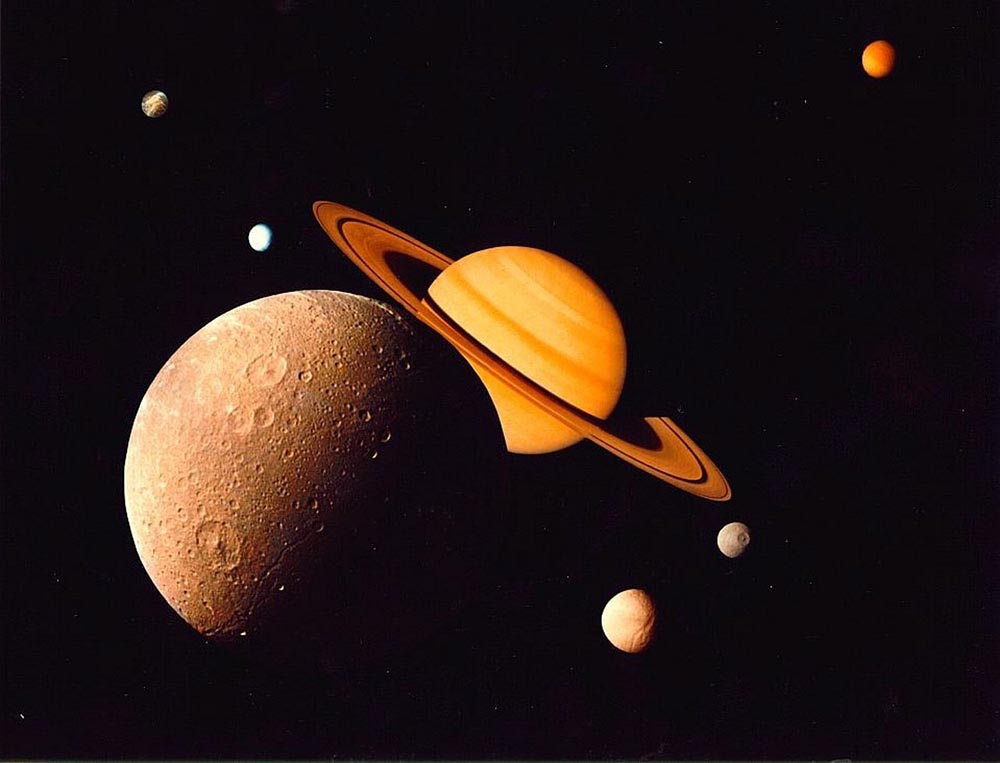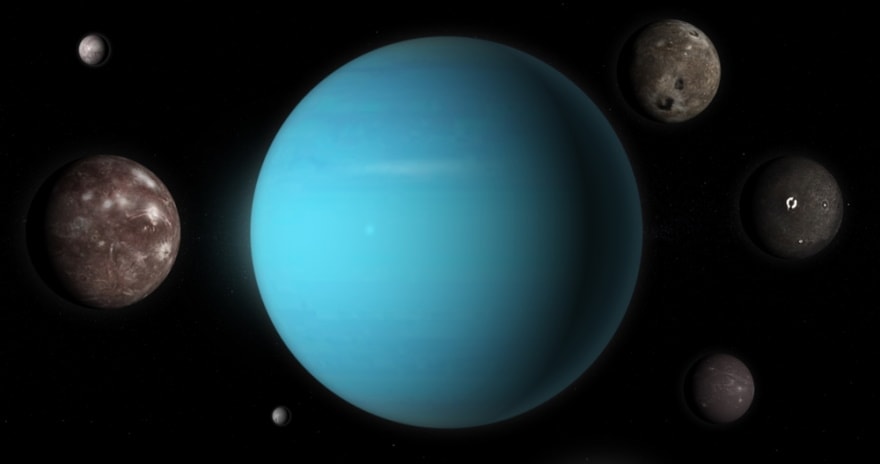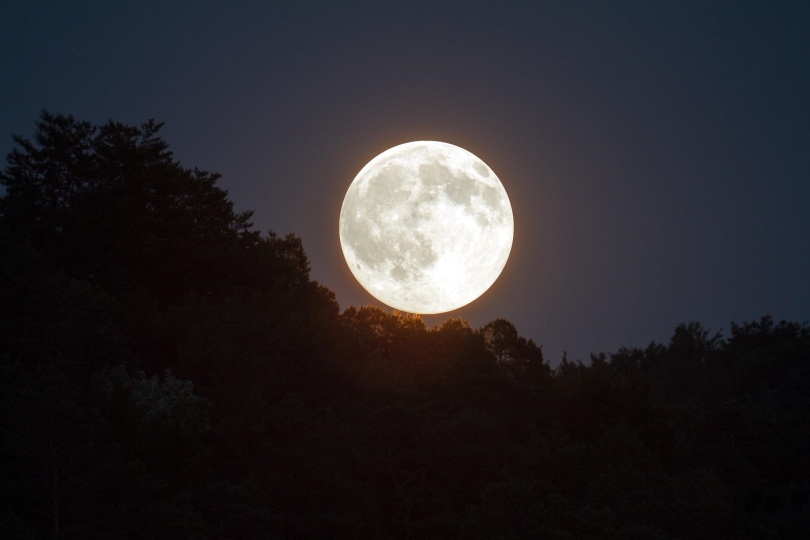Which Planet Has the Most Moons?
Last Updated on

While scientists have already detected most of the larger objects in our solar system, like all the planets, comets, and large asteroids, many planets have several moons yet to be seen. Many people want to know which planet has the most moons, and the short answer is Saturn, but only by a small margin. Keep reading as we take a deep dive into this subject to find out exactly how many moons Saturn has and the number of moons on other planets.

How many moons does each planet have?

Mercury
Mercury is the closest planet to the Sun, and it has no moons.
Venus
Venus is the second closest planet to the Sun, and like Mercury, it has no moons.
Earth
Earth is our home planet, so it’s easy for us to see that we have only one moon. While the media has talked about a second moon, this object is a pseudo satellite instead.
Mars
Mars currently has a remote-controlled rover moving around its surface, sending back images so we can learn more about it. One image that the rover sent back was of an eclipse of one of the two moons of Mars, Phobos. Many scientists believe that it will crash into the planet in several million years or break apart into a ring.
Jupiter
Astronomers believe that Jupiter has 79 moons. Fifty-three of these moons are confirmed, and 26 are provisional, waiting for scientists to put their first eyes on them and verify their existence.
Saturn
After Jupiter is Saturn, the large ringed gas giant. This planet has the most moons, and scientists believe that there are 82 of them orbiting the planet. Like Jupiter, scientists have confirmed 53 of the moons, and 29 are provisional.
Uranus
Uranus doesn’t have as many moon as Saturn, but it still has a significant number, with the current count at 27 confirmed moons.
Neptune
Neptune is the farthest planet out since Pluto was officially classified as a dwarf planet, and it has a total of 14 confirmed moons.
Moons around each planet

| Planet | Moons |
| Mercury | 0 |
| Venus | 0 |
| Earth | 1 |
| Mars | 2 |
| Jupiter | 79 (53 confirmed, 26 provisional) |
| Saturn | 82 (53 confirmed, 29 provisional) |
| Uranus | 27 |
| Neptune | 14 |
| Total number of moons: | 205 |
| Total number of confirmed moons: | 150 |
| Total number of provisional moons: | 55 |
How do moons get their name?
Most of the moons in our solar system have the name of a character that usually comes from Greek, Roman, and Norse mythology. The exceptions are our moon and the 27 moons of Uranus. Astronomers named the moons of Uranus after literary characters found in William Shakespeare’s plays or in poems by Alexander Pope. When astronomers first find a new object, they get a provisional name consisting mostly of numbers. When scientists confirm their discovery, they change the temporary name to an official one.

Are all the other moons like ours?
No, each moon in the solar system is as unique as the planet it orbits. Some moons have consistent orbits, while others have wild orbits, and some are even deteriorating, like Phobos orbiting Mars. There are several ocean moons around Jupiter and Saturn, and you can also find volcanic moons. Some moons, like Titan orbiting Saturn, even have a thick atmosphere. Titan is also quite large, close to the size of Pluto, while some of the other moons around the same planet are only a few miles across.

Final Thoughts
Scientists currently consider Saturn to have the most moons at 82, with Jupiter coming in a close second with 79. The interesting thing is that both planets have the same number of confirmed moons at 53 and more than 25 provisional moons that still need confirmation, meaning Jupiter has a slight chance of coming out on top.
Featured Image Credit: Piqsels
About the Author Ed Malaker
Ed Malaker is a veteran writer who contributes to a wide range of blogs covering information on computer programming, pets, birding, tools, fitness, guitars, and optics. Outside of writing, Ed is often found working in the garden or performing DIY projects in the house. Ed is also a musician, spending his time composing music for independent films or helping people repair their guitars.
Related Articles:
15 Crucial Facts About Ultraviolet Rays & the Sun
What Constellation Is Spica In? The Interesting Answer!
10 Interesting Leo Constellation Facts, Myths, and FAQs
15 Interesting Pegasus Constellation Facts, Myths, and FAQs
6 Interesting Sagittarius Constellation Facts, Myths, and FAQs in 2024!
What Are Constellations? Where Did They Come From?
8 Interesting Libra Constellation Facts, Myths, and FAQs
What Is Infrared Radiation? Science-Based Facts & FAQ
